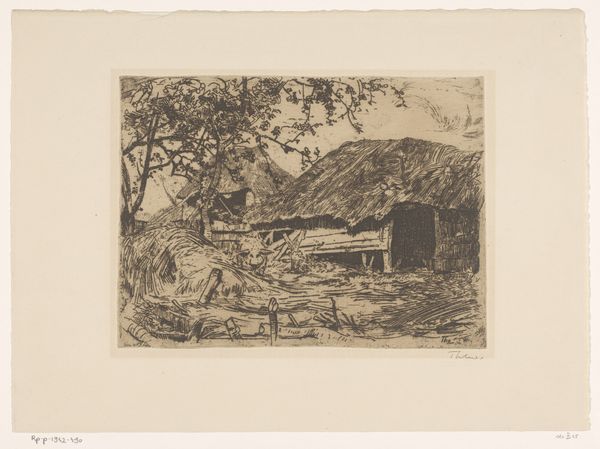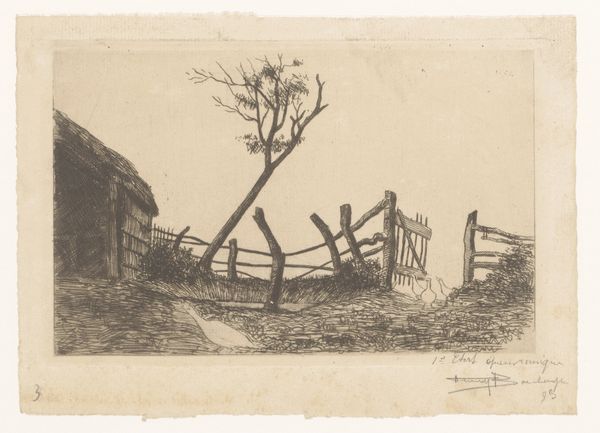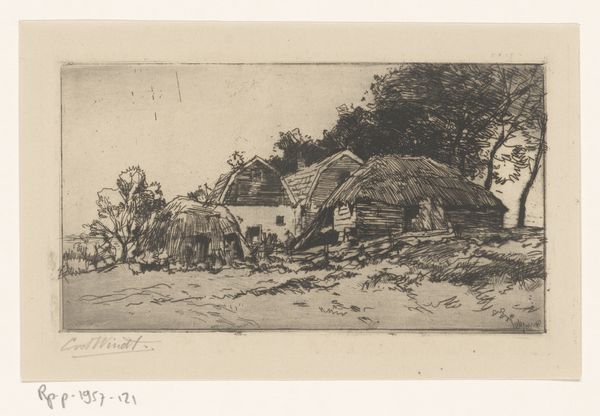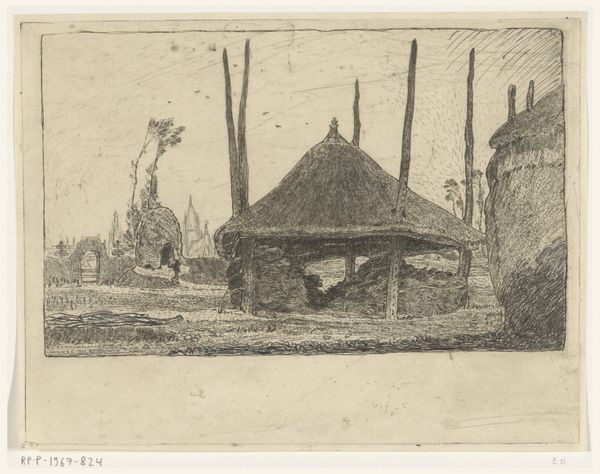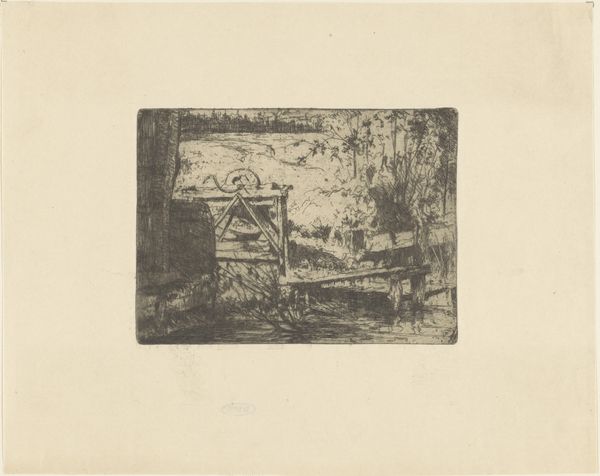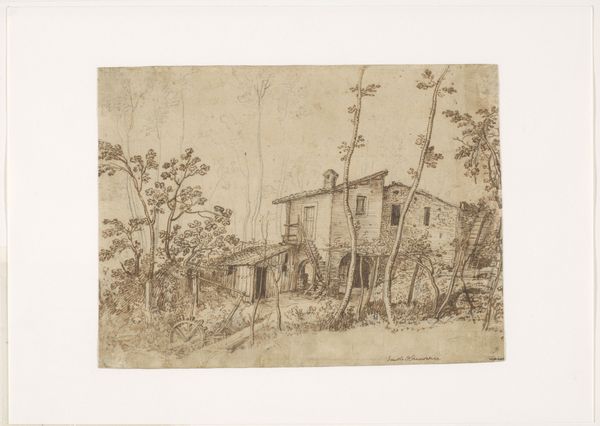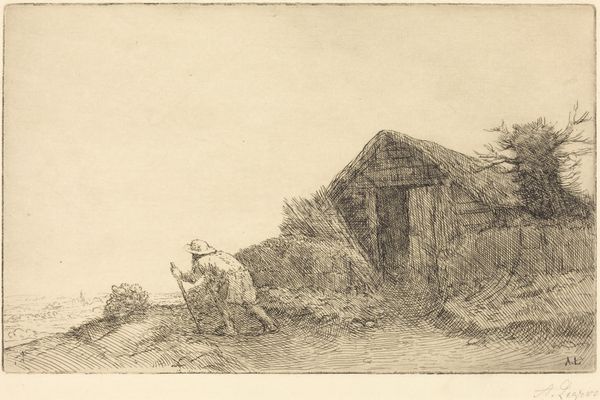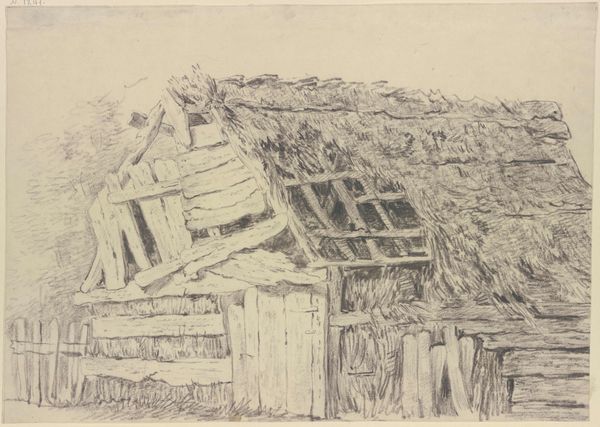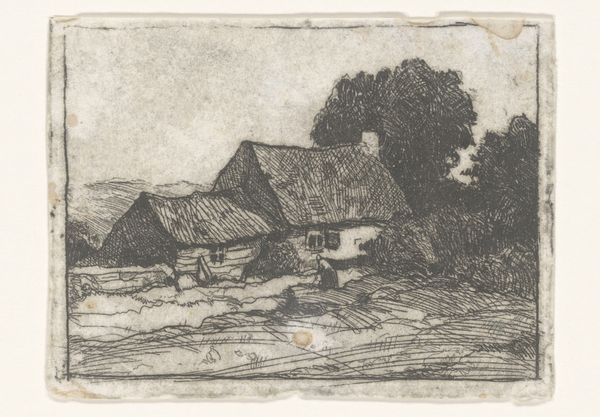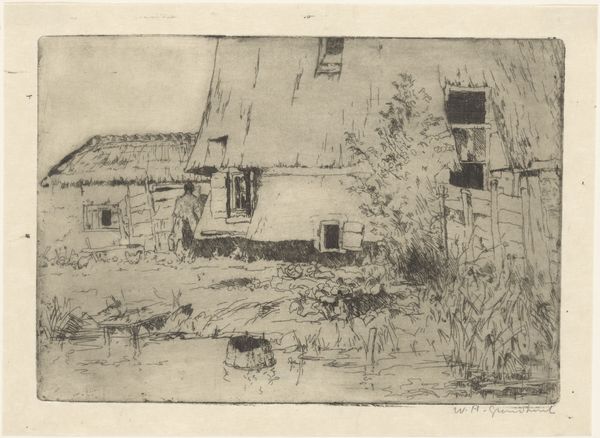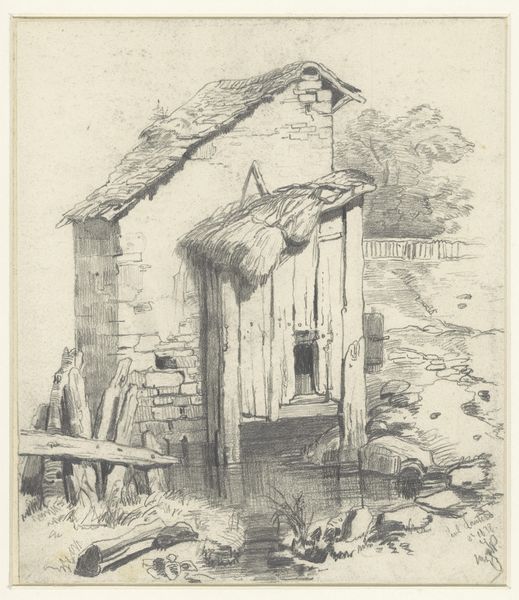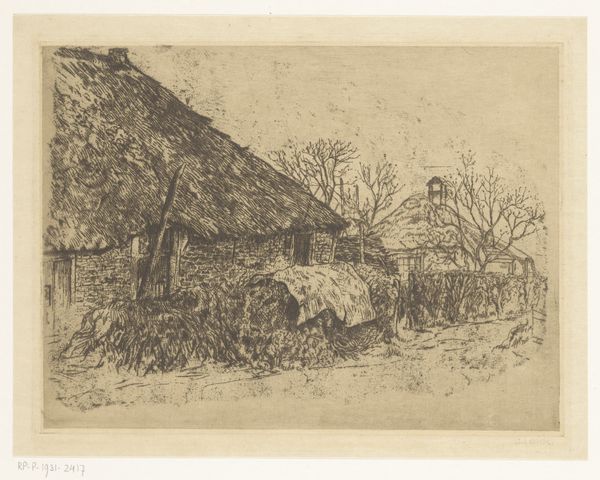
print, etching
#
ink drawing
#
pen drawing
# print
#
pen sketch
#
etching
#
pencil sketch
#
landscape
#
realism
Dimensions: height 100 mm, width 150 mm
Copyright: Rijks Museum: Open Domain
Curator: Let's discuss "Waterput met afdak" ("Well with Canopy"), an etching by Hendrik Frauenfelder, likely created between 1895 and 1922. What's your immediate take on this landscape? Editor: Dilapidation. It feels... forgotten. The etched lines create a strong sense of decay in the materials; the crumbling brick and rotting wood feel heavy. The artist seems fascinated by this process of decline. Curator: I see that decay as representative of a larger societal narrative, perhaps reflective of rural decline during the early 20th century. Agricultural communities were facing considerable social and economic upheavals, and Frauenfelder may be making a commentary on their vulnerability. The well itself, once a symbol of sustenance, is now decaying. Editor: Possibly, but the composition itself directs the eye. The strong horizontal line of the canopy roof draws attention to the opening, framing a void, while the stark contrast between light and shadow amplifies the depth, emphasizing a physical, almost tangible absence. Is it solely about historical rural decline, or is the formal depiction suggesting something more universal, about emptiness? Curator: I would argue it is difficult, perhaps impossible, to separate the personal experience from broader cultural conditions. Farmers had few resources, less political clout, they lived at the whims of weather and harvest yields. Surely it spoke to themes of resilience, but also exposed power structures that disenfranchised so many. This echoes in a contemporary reading, questioning the ethics of current power imbalances. Editor: Power is there, embedded in the mark-making. Frauenfelder carefully employed hatching and cross-hatching to define volume and texture, but the sketch-like quality also implies a sense of impermanence, as if even representation itself is decaying before our eyes. A tension arises, between realistic subject matter and symbolic handling of his tools and material. Curator: So perhaps it’s that very tension you observe that underscores a quiet socio-political tension between human agency and historical forces? I see that artistic expression becomes a record of collective experience. The pen embodies resistance and perseverance amid societal shifts. Editor: Ultimately, what holds my attention is the mastery of the medium. It encourages consideration not only of content but artistic creation. The way it makes visible the relationship between object and depiction. Curator: I am moved to reflect upon its representation as a symbol and historical witness. Editor: I admire its structure and the textures of decline.
Comments
No comments
Be the first to comment and join the conversation on the ultimate creative platform.
